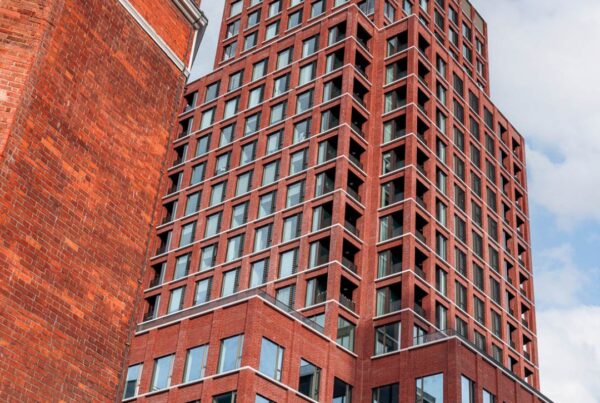(Or: How to Reduce Your Carbon Footprint Without Crying Over Aluminium Prices)
Why Sustainability in Glazing Isn’t Just a Nice Idea – It’s the Entire Brief
Sustainability used to be the last slide in the pitch deck. Now it’s the reason the building gets permission in the first place.
Whether you’re dealing with developers, architects, QSs, or that one ESG officer who insists on checking the carbon footprint of every bracket, the demand is clear: lower embodied carbon, more transparency, and supply chains that don’t involve three continents and a prayer.
Sustainability isn’t optional anymore. It’s commercial survival — with added paperwork.
Recycled Content: The Comeback Kid of Commercial Materials
Glass doesn’t forget — but it can be reused. So can aluminium, uPVC, and spacers, which is why manufacturers are now shouting about their recycled content percentages like they’re on Dragon’s Den.
Aluminium frames now come with up to 100% recycled content. uPVC can hit 70%. If your frame’s still made from pristine virgin material, someone’s missed the brief — or the point.
Embodied vs. Operational Carbon: The Plot Twist You Didn’t See Coming
Your IGU might deliver jaw-dropping thermal performance, but if it takes 400kg of CO₂ to produce and ship, the environmental maths starts looking a bit… awkward.
Embodied carbon is now a board-level discussion. It can make up half of a commercial building’s carbon footprint. Cue the rise of Environmental Product Declarations (EPDs), Life Cycle Assessments (LCAs), and sustainability audits that read like war crimes tribunals.
Designing for End-of-Life (Because That Day Will Come)
Think of circular design like prenups for façades: awkward to discuss, but absolutely vital.
If your glazing system needs a demolition crew and divine intervention to disassemble, it’s not sustainable — it’s a future retrofit headache with a six-figure cost attached.
Specifiers now want systems that can be taken apart, reused, or recycled without bringing the building down with them. Modularity is the new luxury.
Supply Chain Localism: Because Shipping Glass Across Oceans Is Slightly Mad
The most sustainable glass is the one that didn’t spend a fortnight on a container ship dodging typhoons and customs delays.
Local and EU-based manufacturing isn’t just better for emissions — it’s better for deadlines, QA, and sanity. And if your supplier powers their plant with solar and recycles water onsite? That’s the glazing equivalent of a standing ovation.
Crystal Units, for example, keeps it close to home — with solar-powered production, water recycling, and waste reduction built into every square metre .
What to Ask Your Glazing Supplier (Without Getting the Sales Script)
If your supplier gets cagey when you ask for:
- EPDs
- LCAs
- Recycled content data
- Their manufacturing energy sources
- Transport footprint info
…then congratulations — you’ve just discovered a red flag in glass form.
The good ones will give you all this (and a carbon calculator to boot). The great ones already have it in the spec pack.
Choosing Glazing That Actually Helps You Hit Net Zero (Not Just Talk About It)
C.U.in, for instance, uses suspended film technology to deliver better thermal performance than traditional triple glazing — while using up to 33% less material . Lighter, slimmer, and far less carbon-intensive to transport and install.
Add warm-edge spacers, gas fills, and thermally broken frames into the mix, and you’ve got a glazing spec that earns its keep in both the modelling software and the boardroom.
Sustainability: Not a Cost, But a Clever Investment
Framing sustainability as “extra cost” is about as out of date as single glazing.
Today, it means:
- Lower heating and cooling bills
- Better green certifications (BREEAM, LEED, NABERS)
- Higher tenant retention
- Reduced future retrofit pain
- And a smug ESG report your client can wave at investors
In short, sustainability adds value — without adding drama.
Final Word: Where the Glass Goes, the Green Story Follows
Glazing is one of the first things people see. It’s also one of the first things they judge — from planners to tenants to sustainability assessors. So if your windows scream “carbon bomb,” no amount of rooftop PV is going to save you.
Choose glazing that performs. Choose partners who prove it. And remember — sustainable buildings don’t start with targets. They start with smarter choices at the façade.
Don’t know where to start? Crystal Units’ whole mission is world-leading glass without the faff, so get in touch and start the conversation!
Because in 2025, greenwashing won’t cut it. But glass that works harder? That’ll open doors.





